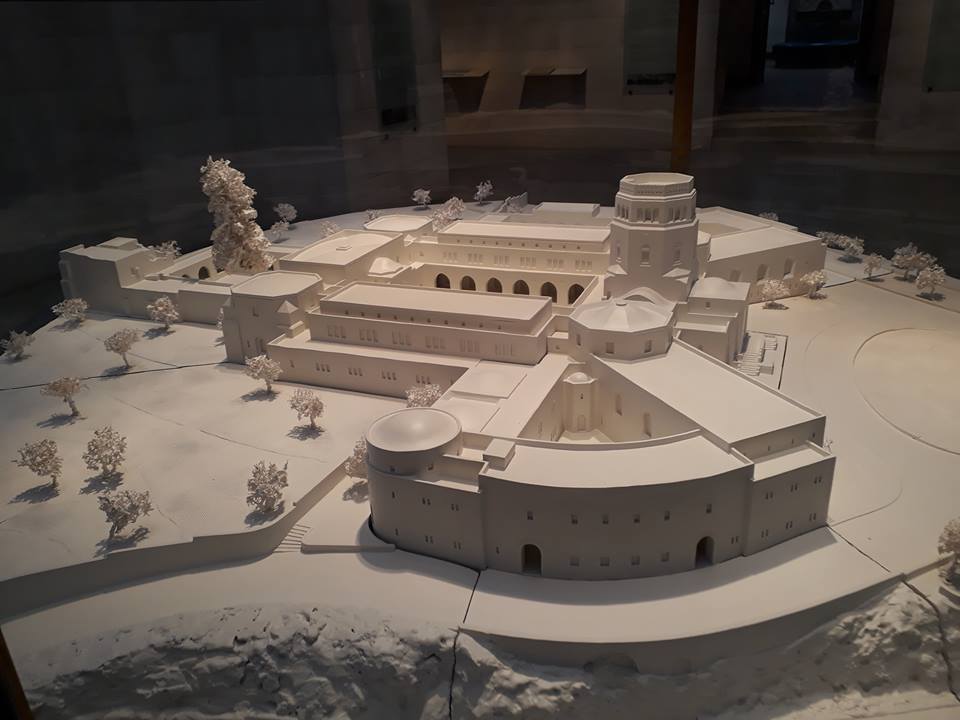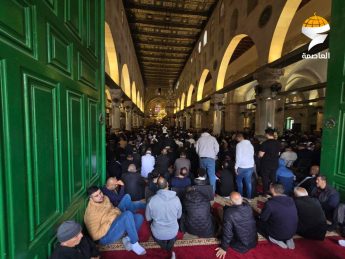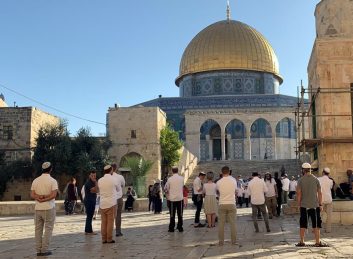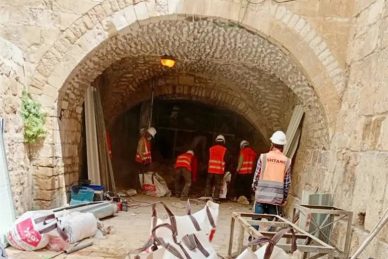At the end of Sultan Sulaiman al-Qanuni Street to the east of the Rashidieh School the Palestinian Museum building known as Rockefeller Building was opened in 1938 facing the north-eastern corner of the Jerusalem wall the Burj al-Laqlaq.
The building of the museum is a landmark of the city of Jerusalem; the tower of the hexagonal stone museum draws people’s attention. It was built on a hill that is known as the vineyard of Sheikh Mohammed al-Khalili.
Founder and objectives
Yousef Al-Natsheh Director of Antiquities and Tourism at the Islamic Endowments in Jerusalem said that this palace reflects the most authentic representation of the traditional Ottoman architecture in Jerusalem and Palestine since the early 17th century before the introduction of modern architecture in Palestine.
Natsheh added to the PC reporter that the museum is also known as the Museum of the Antiquities of Palestine and is famous in the Western writings as the Rockefeller Museum after John Rockefeller who donated $2 million to build the museum in the late 1920s to host what will be revealed of antiques in Palestine.
Museum collection
Natsheh encourages people to visit the museum collections and look at the building from inside because getting to know the building will only happen if both the interior and exterior parts are examined.
In addition the museum collections are very important and rich; it used to host some of Khirbet Qamaran’s scrolls which later were transferred to the Israeli Museum in 1967 which are one of the most important discoveries of the 20th century.
The museum still has a large collection of wooden fillings from the Al-Aqsa Mosque which were used to cover its roof.
There are also stone tiaras carved from the entrance to the Church of the Holy Sepulcher as well as important antiques from Megiddo Askalan Jerusalem Lachish and other sites.
British architect
Natsheh said that the building was designed by British architect Austin St. Barb Harrison (1891-1976) who studied Islamic and Byzantine architecture and was impressed by Islamic architecture. He was appointed as the chief architect of the British Mandate Government’s General Business Department in Palestine.
Harrison lived in Jerusalem in an Arab house in Al-Thawri neighborhood. His style of designing the museum’s building and most of its buildings including the British High Commissioner’s Palace currently the headquarters of the United Nations was blended with Western architectural styles an oriental spirit and the traditional local architecture.
The museum building includes the mainstream European layout which could be seen in public buildings of several architectural units; the museum halls were designed just like churches’ halls with high windows to get natural light.
The museum was influenced by the buildings of the Old City of Jerusalem; there was a difference in the height of the museum’s many buildings as well as by the Andalusian Islamic architecture where an interior pool was added to the museum.
The influence of the local Jerusalem architecture on Harrison’s design especially the use of stones as well as walls domes and Armenian tiles was prominent in the decoration and design which was signed by artist David Ohansian (1884-1952).
The museum building is actually a museum in itself that shows different styles of architecture in Jerusalem to show the impact of local architecture there.
Pain
Yousef Al-Natsheh Director of Antiquities and Tourism at the Islamic Endowments in Jerusalem said there is a huge pain in the hearts of Palestinians. The museum evokes two contradictory memories. It is a place that exhibits their great heritage and culture and at the same time evokes painful memories as a military confrontation took place there during the 1967 War.
He noted that Israel annexed the museum to the Israeli Antiquities Authority immediately after 1967 on the grounds that it was seized as a property of the Jordanian government.
According to Natsheh exhibiting some of the museum’s holdings as part of the Museum of Israel in America was received by opposition from the largest and most famous American museums.















